The AirHed Vu is a compact ball head from 3 Legged Thing. I tested this head alongside one of their latest tripods, and here are my thoughts.
Table of Contents
Introduction and specifications
The AirHed Vu from 3 Legged Thing is a medium-sized ball head with a claimed maximum capacity of 88lbs (40KG) and a weight of 0.77lbs (350g). It has an Arca-Swiss compatible screw-lock clamp, a dedicated panning base lock and a unique viewing window (yes, the Vu) that lets you see the inner workings of the head’s ball locking mechanism.
Ball head capacity
If you’ve ever shopped for a ball head and kept an eye on the specifications, you will immediately notice that the AirHed Vu’s specifications are quite abnormal. An 88lb load capacity is a rarity in any ball head, let along a relatively small head with a price of just $169.
To put this into more context, the much-loved RRS BH-40 ball head has a stated capacity of 18lbs, The previously reviewed Gitzo GH3382 has a capacity of 40lbs, and the reviewed Acratech GXP has a 50lb capacity. All of these heads cost in the region of $450-$500. Even the monster RRS BH-55 is “only” rated to 50lbs.
There is no standardized testing for ball head capacity. You must therefore take manufacturer claims with a grain of salt, and understand that there is simply no way that you can reliably compare this specification in great detail. Small differences might simply be down to the way in which the limit was determined.
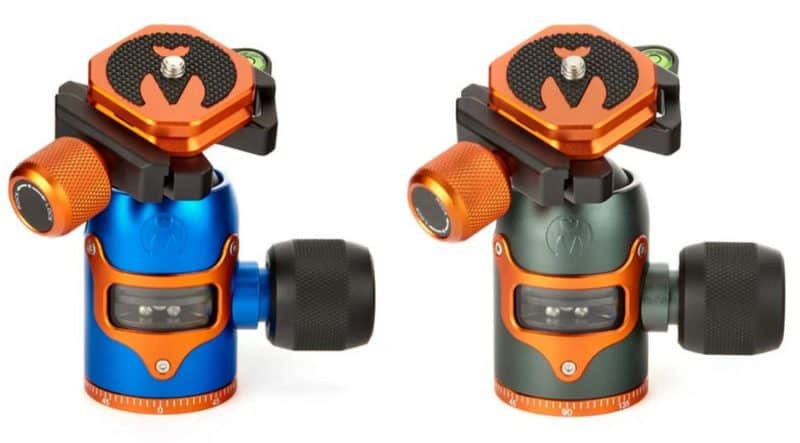
However, stating that a head has an 88lb capacity is a very bold claim. Such a head must be demonstrably similar in load-bearing prowess to the well-known “big guns” in the marketplace. The large Gitzo, Acratech and Really Right Stuff heads for example.
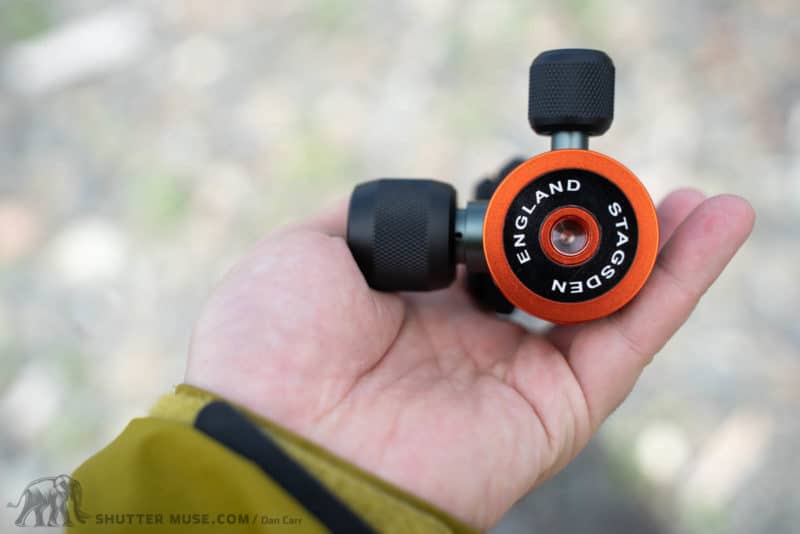
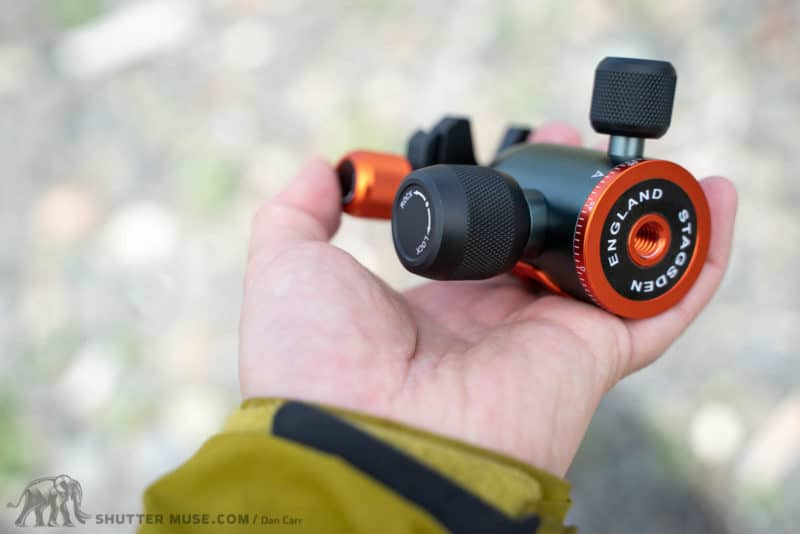
An interesting note: B&H photo lists 528 ball heads in their catalog at the time of writing. Only 22 of these heads have a capacity of 88 lbs or more. 4 of those 22 are versions of the 3-legged Thing AirHed Pro head, essentially this head’s predecessor. The remaining heads comprise various versions of the venerable Arca-Swiss Monoball and the Flexshooter ball head.
So, can the diminutive AirHed Vu deliver on this promise? Does it really compete in capacity with the big names in the ball head market? Let’s take a look.
The Vuing Window
Although this isn’t a feature that has any bearing whatsoever on the functionality of the ball head, the Vu window is obviously the first thing that stands out when you see this head.
How the ball lock mechanism works
When I first read about this feature in the press info pack, I was expecting to be able to see the ball of the head through the window. It turns out that’s not the case. Instead what you are seeing is two small rollers (left and right), and a central cylindrical piece. I’m not sure what to call that piece. I might call it a pusher…
When you screw the ball locking knob tighter, the left and right rollers move closer together. This forces the central “pusher” upwards as it gets squeezed between the rollers. The pusher is attached to the bottom of a cup in which the ball sits. You can’t actually see the cup, but this mechanism was explained to me by 3 Legged Thing. When the pusher and its cup are pushed upwards, it pushes the ball upwards where it makes contact with the curvature in the upper part of the head casing. Once you know what to look for, you can actually see the ball moving every so slightly upwards when you tighten the locking knob.
I found this mechanism to be quite fascinating once I understood what was actually happening. Particularly as most other ball heads that I have seen do not operate in this way. As an aside, I’m told that “some companies” hold several patents on ball head locking mechanisms, which explains some of the different methods on the market.
Understanding = appreciation
The reason I have explained the mechanism to you is that I found the Vu window to be much cooler when I understood what I was looking at. The movements you see through the window are very, very small. Without an explanation from 3 Legged Thing, I really wasn’t sure what I was looking at initially. Although it looked interesting, I felt a bit underwhelmed.
Once it was explained, and I knew what I was looking at, I could actually appreciate the clever engineering and then I became entirely… whelmed? Is that a thing?
Rather than being a bit disappointed with the lack of movement through the window, I actually started to appreciate the clever engineering that was producing such a strong locking force using such a tiny amount of movement. I hope 3 Legged Thing make a video about this feature to try and explain it a little more clearly than I have.
Does the Vu window make it a better performing ball head? No, of course not. Do I think it’s a cool talking point and something to show your photo friends? Absolutely! It’s definitely a fun way to differentiate this head amongst a sea of otherwise similar heads in this middle sector of the market.
Weather Sealing
Initially, I had some concern about whether dirt or moisture could get in through the window, however, I’m told that there is a recessed rubber gasket to prevent this from happening.
Design and build
The head feels very solid in the hand. The satin finish of the main body adds an additional high-quality look and the machined knurling on all three of the locking knobs is perfect. Not too sharp on the skin, and not so faint that it doesn’t add enough grip to solidly tighten things up.
The knobs are also just about at the minimum size I would consider to be glove-friendly. Living in the Yukon as I do, this is something I take into consideration. I’m talking big thick down-filled gloves for temperatures below -30C here. Not skinny fleece liners.
Speaking of the knobs, I use ball heads enough that I don’t need to read the instruction etched onto them. It was only after several hours that I noticed the Lock and Rock wording on the knobs, pictured above. This is an almost laughably minor point, but I think it’s a tad confusing. To me, the word “rock” is closely associated with stability, and being “steady as a rock”. In this instance, 3LT is using it to describe the complete opposite. The “Rock” direction will loosen the head. I assume that they are using rock as in “rock back and forth” but the logic is lost on me. I can’t even blame this on cultural/language differences because 3 Legged Thing is British just like me! A minor point, but a simple + and – would have done just fine. I’m sure people would have understood that.
Pan and ball locks
The panning base lock feels fine, but nothing more than what I would expect from a head of this price. On the other hand, the ball locking knob far exceeded my expectations. It’s both smooth to engage, and smooth to release. When it is released, the motion of the ball is silky smooth.
Ball lock and release feeling is a big deal to me. I like to feel quality construction and machining through my fingers. Some ball heads will give you a nice smooth and solid locking motion, but let you down on the release of that tension. If a highly tightened head suddenly releases all of that tension, going from locked to totally floppy in a split second, it makes small camera positioning adjustments a real chore.
What you want to see is a gradual linear reduction in locking force. This allows you to modulate the ball tension and adjust the camera angle in a semi-locked state. Some larger, more expensive heads even have a tension adjustment knob for this very reason. If a had does not have that feature, the ball lock should release gently and smoothly. In this regard, the AirHed Vu performs flawlessly. The ball lock is simply a joy to use.
Load Capacity Testing
I can generally get a good read on a ball head’s capacity simply by loading it up with my camera locking it in awkward positions. In the case of this head, I felt like I needed to do a little more to test that claimed 88lb rating.
My gear closet contains a good collection of heads from a variety of manufacturers. One of the heads is the Really Right Stuff BH-55. This head has a capacity of 40lbs and is considered by many to be the best on the market. I have never heard one single person complain about this head’s ability to hold a heavy load. Nor have I ever experienced an issue holding even the heaviest pro body + super tele lens combinations. In short, it’s a good benchmark.
Benchmark Test Process
Without electronic testing equipment and industry standardized ball head capacity procedures, this test has to be a little subjective. First of all, I applied a large amount of tension to the ball locking knob. I tried my best to apply a similar amount of effort in locking the balls on both the AirHed and the BH-55. Then I clamped an empty L bracket into the ball head clamp and used it as a levered handle to try and move the position of the ball.
I applied huge amounts of weight to both heads, practically hanging my bodyweight off them. I applied a force to them that was way larger than anything they would experience when holding even the largest camera setups. In the end, I managed to get the BH-55 to slip very slightly. I’m sure I applied considerably more than the stated 40lb limit, so this didn’t surprise me. In fact, I think it stood up very well to the way I was clearly abusing it.
Airhed Vu Test
But what about the AirHed Vu? In theory it has a higher capacity. Can a $169 head really handle more weight than a $650 head?
Remarkably, after repeating this test several times, I am confident in saying the AirHed Vu does have a higher capacity. In fact, I simply could not get the ball to move at all. In the end, I gave up because I thought I might break the tripod.
While I can’t say for certain what the actual head capacity is, I can say that it is absolutely huge. Far more than anyone would ever need for a photographic camera. Despite some initial scepticism, it does seem that this head deserves a capacity rating which exceeds the majority of other heads on the market.
Incidentally, I also threw the Acratech GXP into the mix at this point with it’s claimed 50lb rating. Mainly because it is the most used head in my arsenal and I wanted to see how it held up to some stiff competition. Result: I was also unable to get the GXP’s ball to move.
In some ways, this is reassuring. The two heads with the higher capacities both outperformed the head with the lower capacity. But it also goes to show that once a head reaches a certain capacity, all things start to become equal. The capacity of the heads simply exceeds the weight you are ever likely to put on it. I’d certainly use any of these heads for any weight of camera gear.
Although this loose experiment probably wouldn’t pass muster in a science lab, it was good enough for me to determine that the AirHed Vu is a top performer in terms of capacity. A weak ball locking mechanism would easily have shown its true colours in this test. Don’t let size and price fool you, this head is incredibly solid.
This result is a bit of an eye-opener! While ball locking strength and load capacity aren’t the only thing that determines how good a ball head is, results like this leave little room for excuses if/when a higher-priced head misses the mark in this area.
Included QR4 Tripod Plate
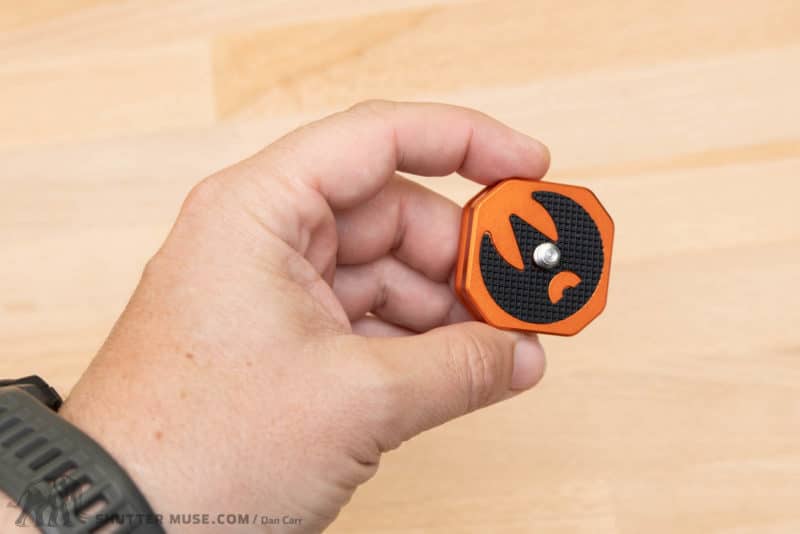
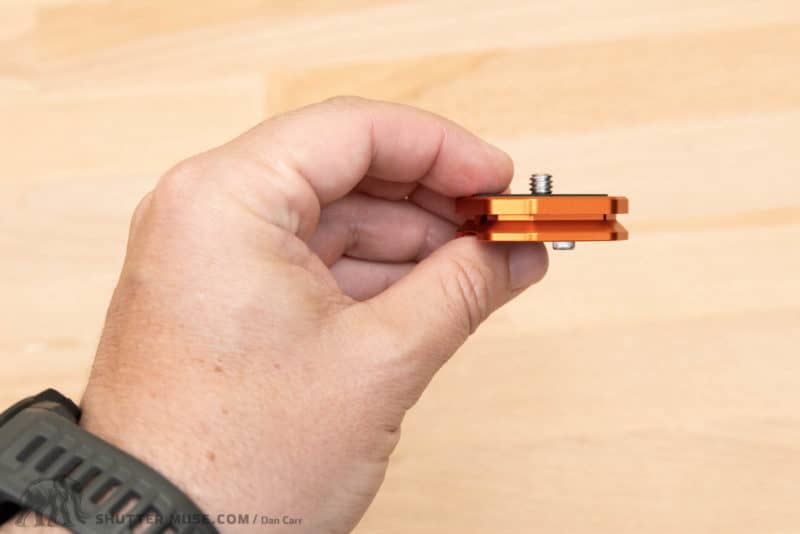
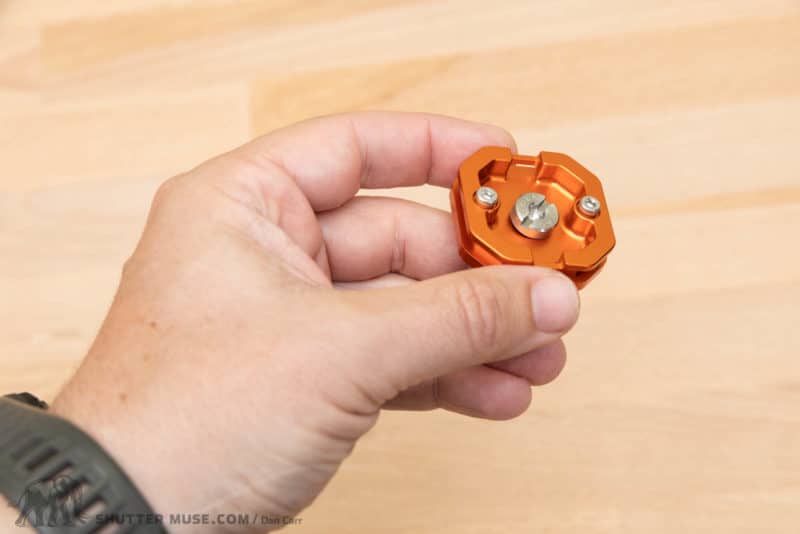
The AirHed Vu ships with 3 Legged Thing’s QR4 quick release plate. This plate has 6 different spots on it where you can connect Peak Design Anchors is you use one of their shoulder straps. The plate is nicely machined with an effective rubber anti-twist grip on the top surface.
My one complaint about the QR4 is that I think it could be updated to be lower profile. It’s an unnecessarily thick plate. Peak Design has shown us that it’s possible to create incredibly thin Arca plates of this size, that offer no meaningful downsides.
AirHed Vu tripod kits
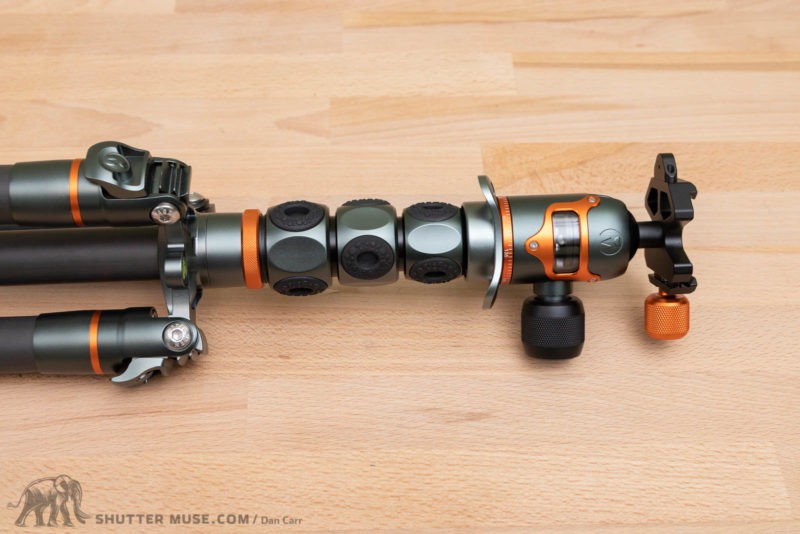
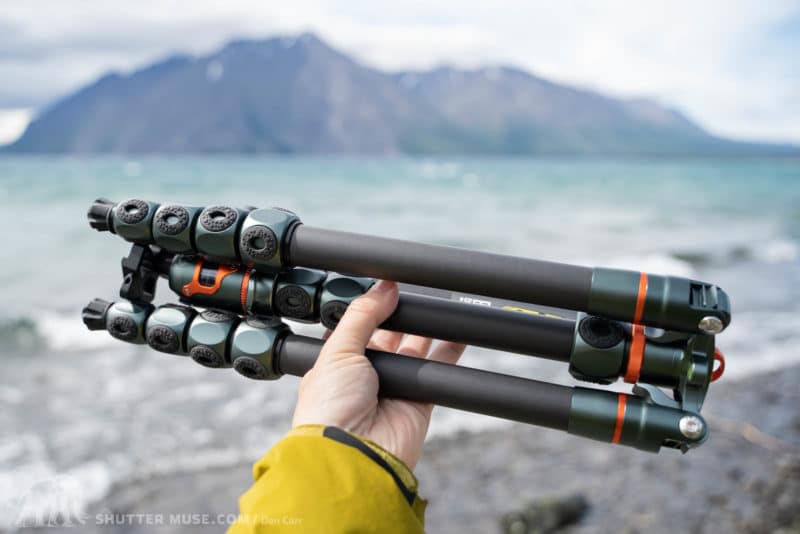

The AirHed Vu ball head was launched alongside the Ray and Bucky tripods from the 3 Legged Thing Legends range. The head is available for purchase on its own for $169, or as part of a kit that includes either the Ray or Bucky tripod.
When you get the head in the kit with the tripod, you’re essentially only paying $100 for the head instead of $169. For a head of this quality and stability, that’s a good deal that’s worth taking into consideration.
For more information about the Ray and Bucky Legends tripods, you can read my review here: 3 Legged Thing Bucky Tripod Review
AirHed Vu Vs. AirHed Pro ball head
3 Legged Thing’s slightly cheaper AirHed Pro ball head is internally almost identical to the AirHed Vu. When I asked what the difference was between the two heads, the answer was simple: The Vu port.
Both the AirHed and the AirHed Vu offer the same 40KG (88lb) capacity, have the same included QR4 plate and have near-identical weights. As far as I can see from the photos, the ergonomics of the pan lock and ball lock knobs have also been slightly adjusted to give a larger surface area for grip.
If you want to save some money, I’d expect the AirHed Pro to perform the same job as the AirHed Vu. Albeit without the viewing window.
Optional Accessories
3 Legged Thing L Brackets
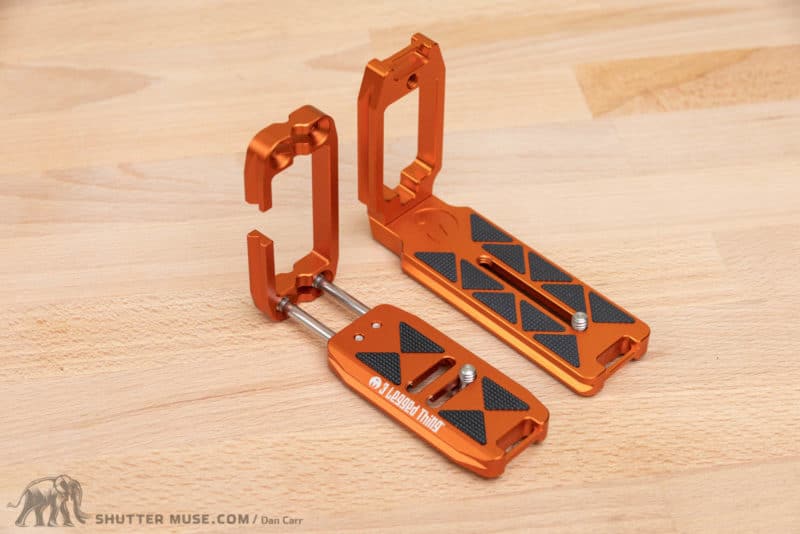
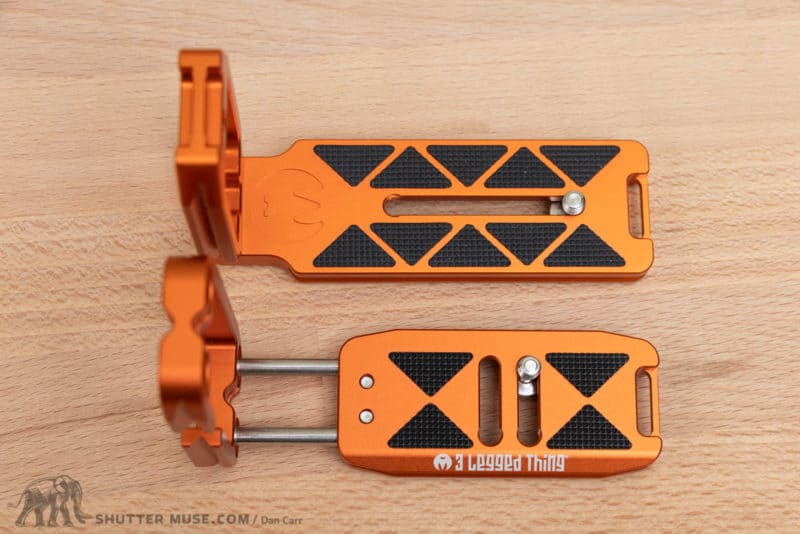
3LT also make a pair of very good universal L brackets that would pair nicely with one of their heads. You can read my reviews of these two L brackets here:
Lever Clamp
If you prefer a lever-release clamp, 3 Legged Thing make a matching one that has a locking lever. Locking levers are the safest kind of lever clamp. To prevent accidental release, they require a secondary lever to be depressed in before the primary lever is moved.
Conclusion
I’m deliberately posting another in-the-hand image of this head right above the review. It’s there for all the people that simply scrolled to the bottom to read the conclusion.
This head definitely falls into what I would consider being the medium-sized ball head category. It’s far from large but also manages to maintain a solidly ergonomic feel. Take a look at the main locking knob in this picture, for example. It’s relatively large for the size of the head, but that’s a good thing. It feels great to use and gives you plenty of leverage for clamping the ball.
Aside from the generally excellent feel and function of the head, the standout result of my testing has to be the capacity. When I saw the 88lb load rating I was initially sceptical. There is no other ball head on the market of this size that claims such a high capacity. In fact, there are very few heads on the market at any size that claim this kind of capacity. And yet, in my testing, I saw it outperforming (in capacity terms) a $600+ ball head in the form of my own RRS BH-55.
With relatively little effort on the locking knob, I was able to lock this ball head to the point where I was sure my tripod would break before I was able to get the ball to budge. And that’s not even with a camera on it. That was me deliberately creating leverage with an empty L bracket in the clamp, and then practically hanging off it. A remarkable result!
All in all, this is a fantastic ball head, both in terms of function and value. I will be happily recommending it to people who need a mid-sized ball head on a mid-sized budget.
Where to Buy
As always, using my links for your purchases is appreciated. The AirHed Vu ball head is available from the links below.

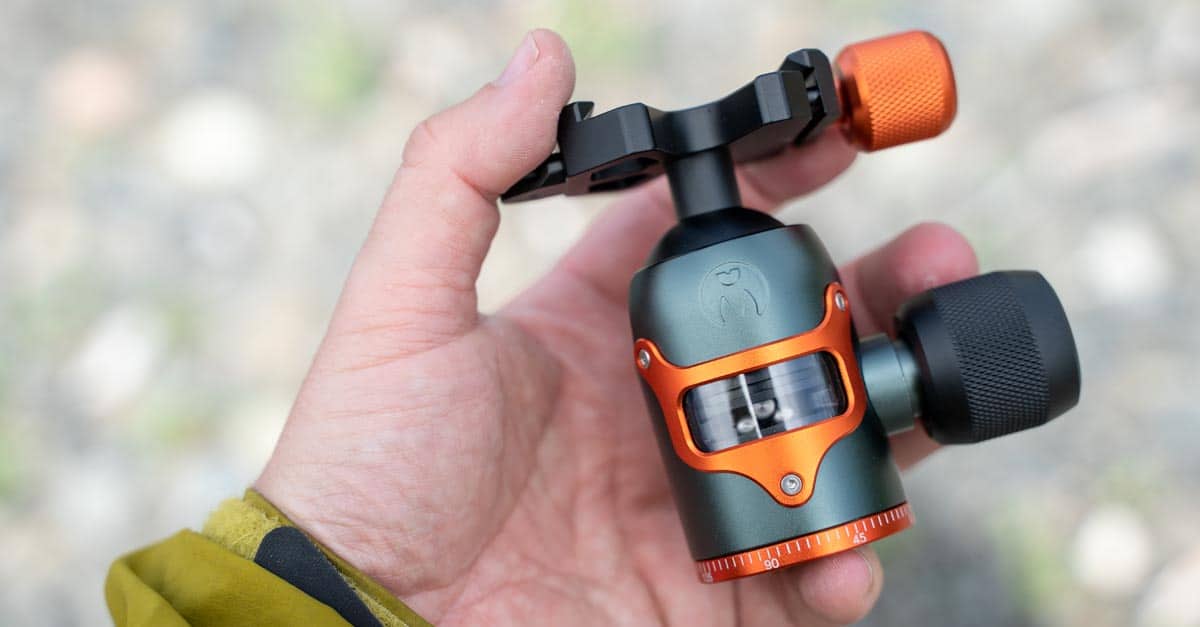
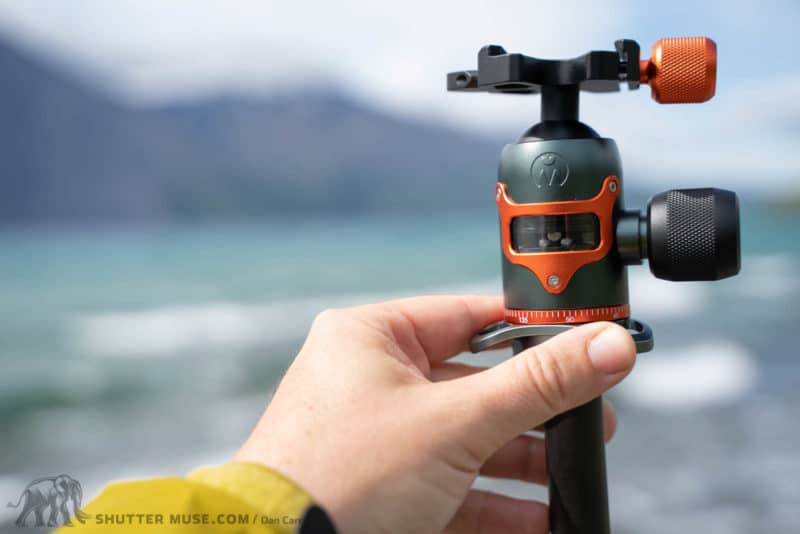
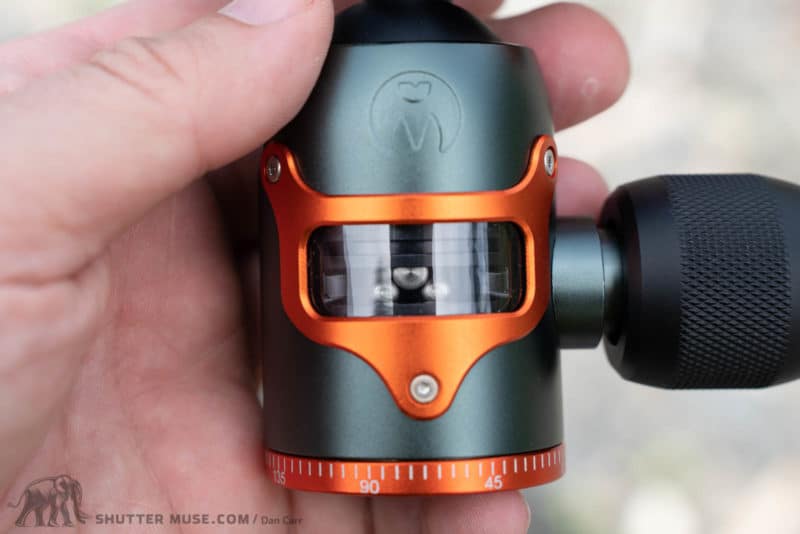
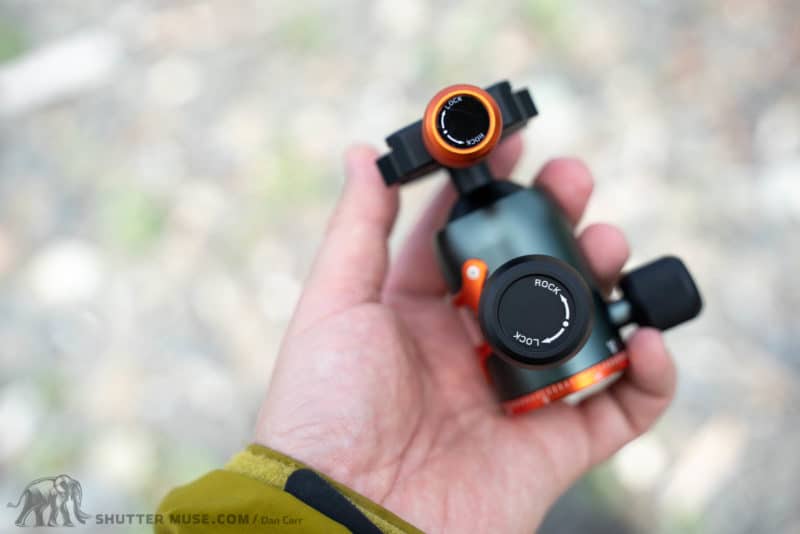
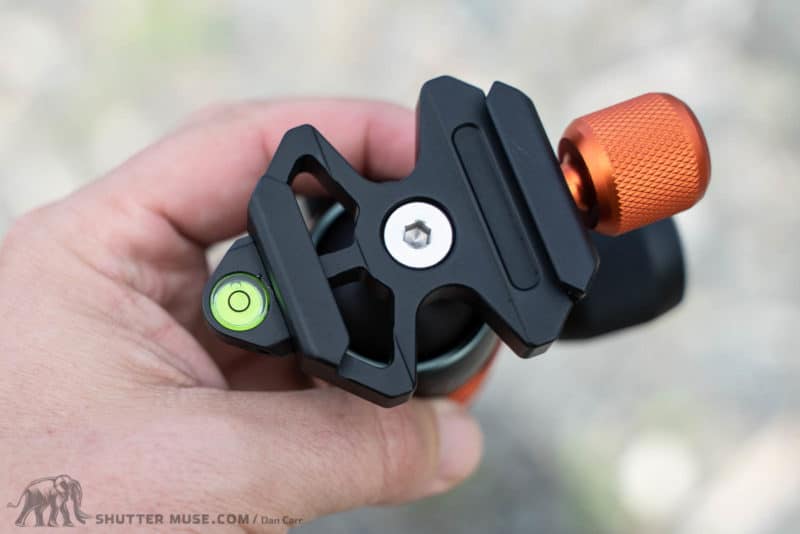
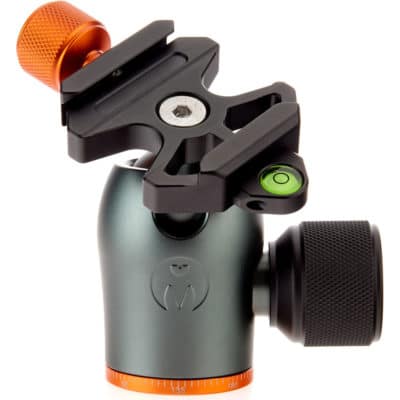
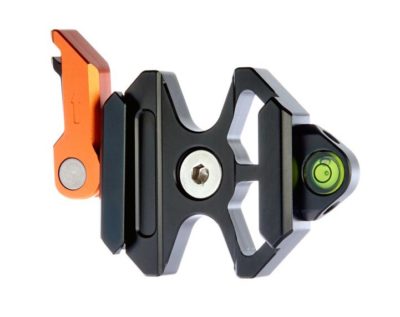
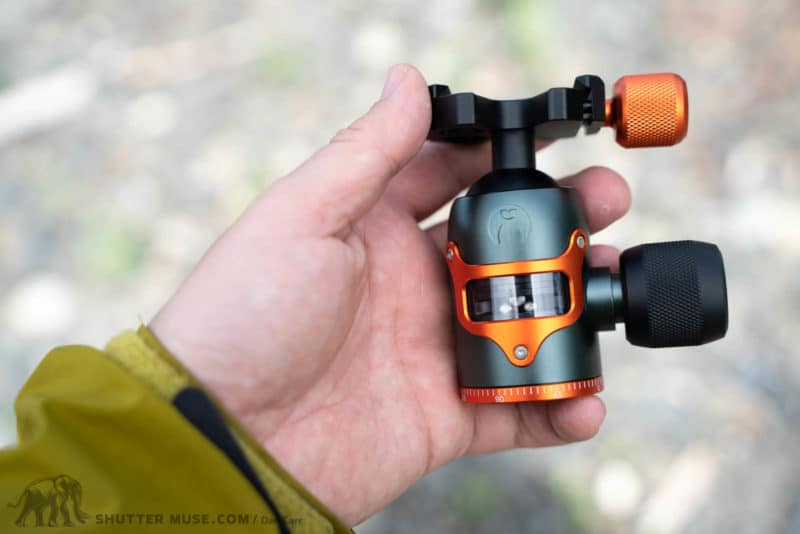


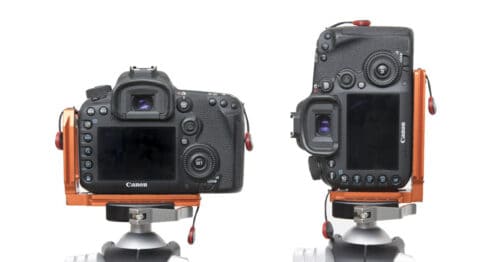
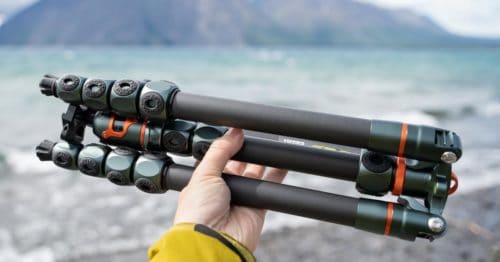
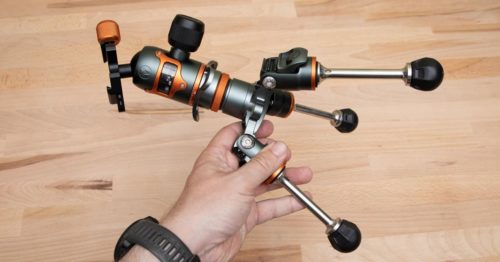
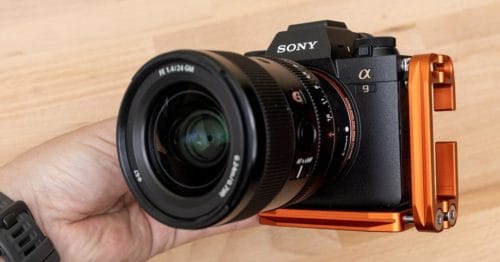
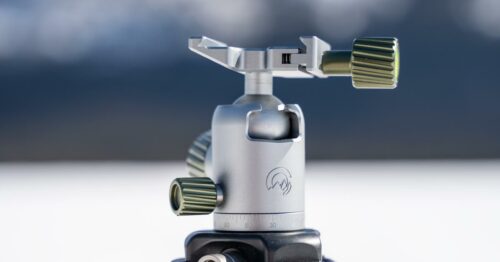
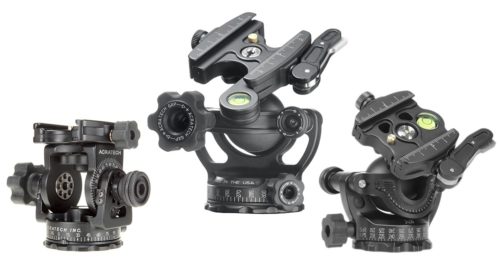
Excellent Review! In fact I just ordered one. Many thanks.
this design is a copy of manfrotto ball head 488RC4 ball lock mechanism
Interesting. I would not be surprised if there are others, too. But this is the first time I can see it and understand it.